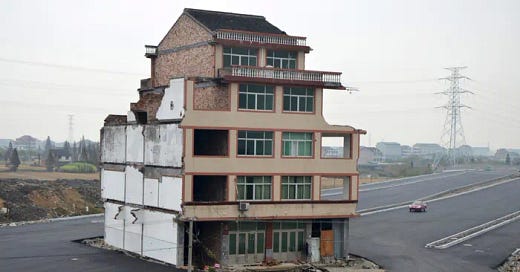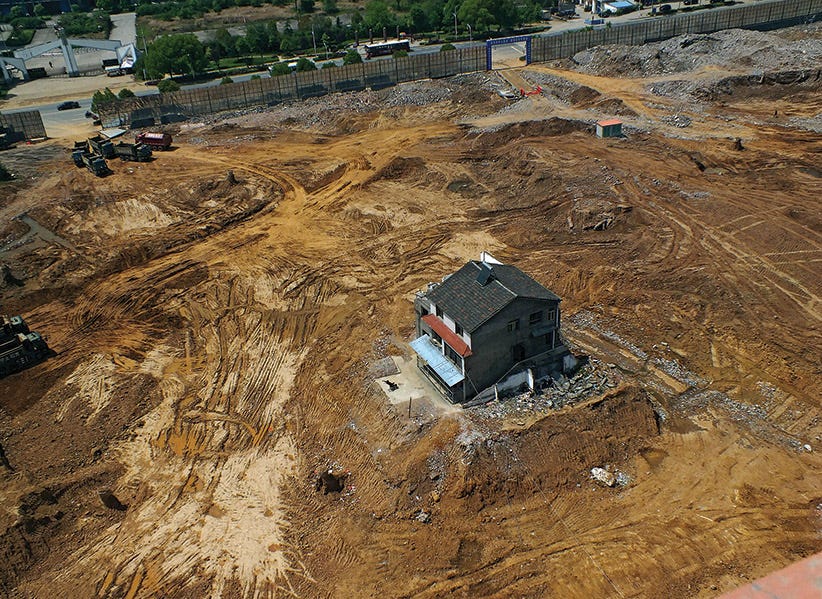In the dynamic landscape of urban development and expansion, nail houses have emerged as intriguing symbols of resistance and individuality. Derived from the Chinese term "dingzihu" (钉子户), which translates to "nail house" in English, the phenomenon has gained significant attention in Japan. These unique structures represent the determination of property owners who refuse to yield to the pressure of modernization and urbanization. This essay explores the origin, significance, and impact of Japanese nail houses on the urban landscape and society.
The concept of nail houses originated in China during the early 21st century, but the idea quickly spread to other Asian countries, including Japan. The term "nail house" refers to a standalone building, usually a residential property, which continues to stand amidst rapid urban development despite facing pressure from developers and authorities to vacate or make way for new construction projects. The name "nail house" originates from the idea that these houses are like stubborn nails refusing to be removed from the ground.
Several factors contribute to the emergence of nail houses in Japan. One of the primary reasons is the country's rapid urbanization and continuous efforts to modernize infrastructure. As Japanese cities expand to accommodate the growing population and economic activities, old neighborhoods often face redevelopment, leading to displacement and demolishing of older buildings.
Another significant factor is the Japanese cultural value attached to properties. Owning a piece of land or a house has historically been seen as a symbol of stability, success, and family heritage. For some property owners, their houses have been in their families for generations, making it emotionally challenging to let go of their homes.
Japanese nail houses are symbolic expressions of resistance against the overwhelming force of urbanization. In the face of lucrative offers and pressure from developers and local authorities, the owners of these properties choose to stand their ground and protect their right to remain in the place they call home. In doing so, they become symbols of resilience, determination, and individuality.
The presence of nail houses amidst bustling urban centers can create a visual dissonance, often referred to as "urban scars." Amidst the sleek and modern skyscrapers, these humble and sometimes rundown houses become anachronistic reminders of a different time and lifestyle. This contrast can trigger contemplation about the evolving cityscape and the importance of preserving heritage and community history.
The resistance of nail house owners can also lead to changes in urban planning and development. When authorities and developers face opposition from determined property owners, they may reconsider their plans and strive for more balanced and sustainable development. This can foster a dialogue between citizens and decision-makers, promoting more inclusive urban planning that respects the wishes of local communities.
The existence of nail houses raises several legal and ethical questions. Property rights are crucial in any society, and while nail house owners have the right to protect their property, their resistance can also lead to complications. Local governments may face challenges in infrastructure development and urban renewal if certain properties remain impervious to change.
The government may resort to measures such as eminent domain to acquire properties for public projects. However, such actions can be contentious, and the fair compensation and treatment of property owners must be ensured.
The phenomenon of nail houses compels societies to find a delicate balance between preservation and development. While it is essential to progress and modernize cities, preserving cultural heritage and historical neighborhoods is equally important. The coexistence of modernity and tradition can add depth and character to urban landscapes, making cities more vibrant and appealing.
Japanese nail houses are not merely isolated structures standing in defiance of progress but embody a profound human narrative of resistance, heritage, and individuality. As Japan continues to evolve, the phenomenon of nail houses serves as a potent reminder of the delicate balance required between progress and preservation. It challenges society to respect property rights, foster dialogue between stakeholders, and create a sustainable urban future that retains its history and cultural richness. The stubborn nails of Japan's urban landscape remind us that amidst change, the essence of a community lies in its ability to cherish its past while embracing the future.










I had never heard of nail houses before, what an amazing act of resistance!
Reminds me of Stott Hall Farm, solitary and remote, splitting the M62's carriageways in Yorkshire, apparently to circumvent a geological fault. Tho' I much prefer the story that the farmer steadfastly refused to budge.